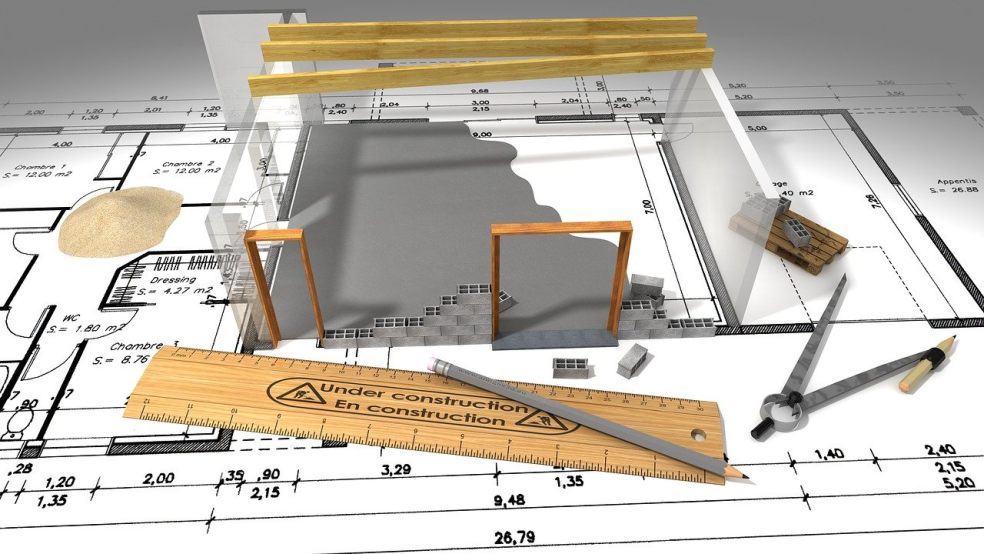
Planning permission: Protecting the environment and building your dream home
When you're in a position to build your dream home, starting the project can be a daunting prospect. You will need to consider many things, from surveys to getting planning permission and setting your budget to beginning construction. But, how do you get started? In this article, we'll cover everything you need to know in order to build your dream home while protecting the environment.
Finding the Right Plot
There are many types of buildings you might be dreaming of turning into a home for you and your family, but the first step is finding the right plot when it comes to starting this project. You may choose to purchase a plot that already has planning permission, but you would need to follow the approved plan if the local authority rejects proposed changes. Whereas if you were to purchase land that did not have any planning permission in place, you would risk a lengthy process of getting approval for your dream home. In most cases, you can contact the local authority before you purchase to gain an understanding of what type of properties they would be happy to have built on the plot, which would reduce the risk of rejected plans.
Land and Tree Surveys
Once you have the land, there are some steps you need to take before you can get planning permission, such as land and tree surveys. A land survey will tell you everything you need to know about the plot you want to build on, including whether it is at risk of flooding if you experience heavy rain in the future and how deep you will need to dig for stable foundations. Some trees are protected, and if the land you purchased comes with many trees, you will need to have a tree survey done to determine which types are on your land and if your build can continue without needing to remove them. If you do need to remove trees, you will need to have an arboriculture impact assessment, also known as a tree report, which will tell you if you can remove the trees and continue construction.
Biodiversity Net Gain
Many people are unsure of what biodiversity net gain is, but this is a vital step in order to gain planning permission for your home. All developments now need to leave the environment in a better condition once construction is complete. You will be expected to increase the biodiversity net gain, also referred to as BND, by 10%, and in order to do this, you will need to have an expert assess the site. Following the assessment, you will have everything you need to implement plans to create or enhance existing wildlife habitats within your development. When you start planning your dream home, this aspect may be daunting, but head over to Arbtech for their expert advice on biodiversity net gain for more information. They have the experts on hand who can provide assistance and supply you with key data.
Set Your Budget
Once you have the surveys and assessments in place to protect the environment, it's time to set your building budget. Many people create their plans first to give them a better idea of what they'll be spending their money on, but if you work with your architect during the budgeting process, you won't need to rework the plans to fit with your budget, which could mean compromising on your dream. Once you understand how much each step of the way will cost, you'll be able to plan your dream home with your architect, which will be in line with what you can reasonably afford, from construction to furnishings. However, it is also a good idea to leave yourself some room in the budget to allow for possible setbacks; this will protect you if materials or construction is delayed at any point, which could become costly.
Designing Your Dream
Designing your dream with your architect is the most enjoyable part of building your home, aside from seeing the finished project. Working with your architect will help you put your dreams onto paper and let you work out what aspects will work best with each other to create the perfect home. They will be able to talk you through the materials that you could use and typically have contacts for contractors who you can trust, which will help to ease your mind throughout the whole process.
Getting Planning Permission
Once you have your designs ready, it's time to get planning permission. With the environmental surveys completed already, you will be in a much better position to get your plans approved, but this process can still be lengthy. Keep in contact with the local authority throughout the process as they can advise if you need to make any changes to your designs and if they need any assurances from you.
Making Sure You Have Insurance
During the process of building your home, you will need to have the right insurance to cover you for liability on-site and for public safety. Having insurance will protect you inf any of the builders get injured during the construction and if any members of the public have an accident as a result of the work. Accidents can derail the entire project, and having the right insurance in place will help to minimise the impact and ensure that everyone involved is taken care of properly.
Beginning Construction
Once you have planning permission and you have the right insurance in place, it's time to begin construction. Breaking ground on your dream home project is exciting, and once construction begins, you will be able to watch your dreams become a reality. But first, you will need contractors to build your property. Your architect may have contacts they can give you of the best contractors in the area for this project, but you may already have a company in mind for your project. Whoever you pick, you should spend time talking with them and going over the plans to ensure they are suitable for the job. If you're not comfortable at any point during the meetings, you will be able to step away and find a contractor that puts your mind at ease.













